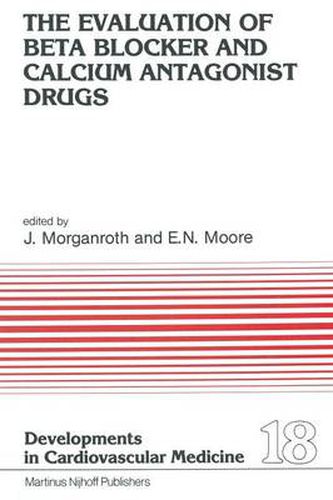Readings Newsletter
Become a Readings Member to make your shopping experience even easier.
Sign in or sign up for free!
You’re not far away from qualifying for FREE standard shipping within Australia
You’ve qualified for FREE standard shipping within Australia
The cart is loading…






This title is printed to order. This book may have been self-published. If so, we cannot guarantee the quality of the content. In the main most books will have gone through the editing process however some may not. We therefore suggest that you be aware of this before ordering this book. If in doubt check either the author or publisher’s details as we are unable to accept any returns unless they are faulty. Please contact us if you have any questions.
With the beginning of the 1980’s it was becoming increasingly evident that the lack of approval of new cardiovascular agents for use by clinicians in the United States for the treatment of cardiovascular disorders was becoming a problem. Patients requiring medical therapy for hypertension, angina pectoris, arrhythmias, congestive heart failure, and vasospastic disorders of the coronary arteries could receive in the United States only a small number of the drugs available to physicians in the rest of the world. In fact, as the 1980’s began, there was only one available beta blocking agent released by The Food and Drug Administration; and even as of this writing, no oral calcium antagonist agent. This lag, in part, has been due to the confusion of proper and expeditious methods to define safety and efficacy of such agents so that the United States regulatory agency (Food and Drug Administration) could approve the use of such agents by clinicians. The vast number of new beta blocker and calcium antagonist agents being developed, as well as the long-term use abroad of many new drugs, has raised important questions as to how relative safety and efficacy of such agents can be determined to facilitate availability in the United States.
$9.00 standard shipping within Australia
FREE standard shipping within Australia for orders over $100.00
Express & International shipping calculated at checkout
This title is printed to order. This book may have been self-published. If so, we cannot guarantee the quality of the content. In the main most books will have gone through the editing process however some may not. We therefore suggest that you be aware of this before ordering this book. If in doubt check either the author or publisher’s details as we are unable to accept any returns unless they are faulty. Please contact us if you have any questions.
With the beginning of the 1980’s it was becoming increasingly evident that the lack of approval of new cardiovascular agents for use by clinicians in the United States for the treatment of cardiovascular disorders was becoming a problem. Patients requiring medical therapy for hypertension, angina pectoris, arrhythmias, congestive heart failure, and vasospastic disorders of the coronary arteries could receive in the United States only a small number of the drugs available to physicians in the rest of the world. In fact, as the 1980’s began, there was only one available beta blocking agent released by The Food and Drug Administration; and even as of this writing, no oral calcium antagonist agent. This lag, in part, has been due to the confusion of proper and expeditious methods to define safety and efficacy of such agents so that the United States regulatory agency (Food and Drug Administration) could approve the use of such agents by clinicians. The vast number of new beta blocker and calcium antagonist agents being developed, as well as the long-term use abroad of many new drugs, has raised important questions as to how relative safety and efficacy of such agents can be determined to facilitate availability in the United States.